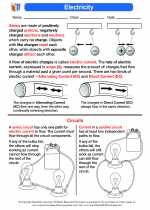Polarization: Explained
Polarization refers to the orientation of the oscillations of a transverse wave. In simpler terms, it's the direction in which the wave vibrates as it moves through space. This phenomenon is commonly encountered in the context of light waves, but it also applies to other types of waves, such as electromagnetic waves and seismic waves.
Types of Polarization
There are three main types of polarization: linear, circular, and elliptical. Each type is characterized by the specific orientation and magnitude of the wave's oscillations.
Linear Polarization
Linear polarization occurs when the oscillations of the wave are confined to a single plane. This means that the wave vibrates in a specific direction as it propagates through space. Think of it as similar to the movement of a rope when you shake one end - the wave travels in a straight line, with its oscillations restricted to a single plane.
Circular Polarization
Circular polarization, as the name suggests, involves the wave's oscillations moving in a circular pattern as it travels. This type of polarization can be further classified as either right-handed or left-handed, depending on the direction of the circular motion.
Elliptical Polarization
Elliptical polarization is a combination of linear and circular polarization. In this case, the wave's oscillations trace out an elliptical path as it propagates through space.
Applications of Polarization
Polarization has numerous practical applications across various fields. In the realm of technology, it is used in the design of polarizing filters for cameras and other optical devices. These filters help reduce glare and improve image quality by selectively blocking certain orientations of light waves. Additionally, polarization is utilized in the transmission and reception of polarized electromagnetic waves in telecommunications and radar systems.
Study Guide: Understanding Polarization
- Define polarization and explain its significance in the context of wave behavior.
- Describe the differences between linear, circular, and elliptical polarization, giving practical examples of each type.
- Discuss the applications of polarization in technology and everyday life, providing specific instances where polarization is utilized to enhance performance or functionality.
- Explain the concept of polarizing filters and their role in improving image quality in optical devices. Include a diagram illustrating the function of a polarizing filter.
- Research and present a case study on the use of polarization in a specific industry or scientific field, highlighting its impact and significance in that context.
◂Science Worksheets and Study Guides Sixth Grade. Electricity

 Activity Lesson
Activity Lesson
 Worksheet/Answer key
Worksheet/Answer key
 Worksheet/Answer key
Worksheet/Answer key
 Worksheet/Answer key
Worksheet/Answer key
 Worksheet/Answer key
Worksheet/Answer key
 Vocabulary/Answer key
Vocabulary/Answer key
 Vocabulary/Answer key
Vocabulary/Answer key
